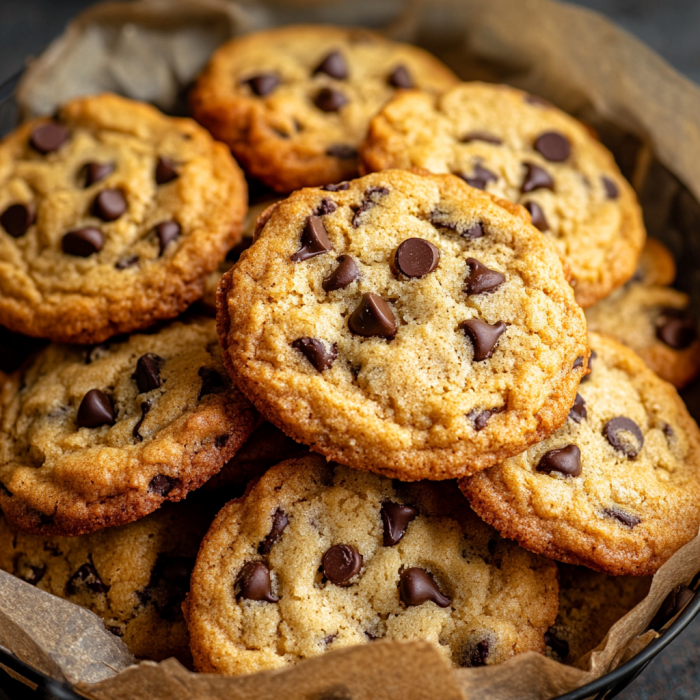Chocolate chip cookies have captivated hearts and taste buds across the globe, standing as a testament to timeless culinary delight. Traditionally, vanilla has been a cornerstone in baking these cookies, lending them a familiar warmth and depth. But what happens when this classic ingredient is omitted? This guide embarks on a culinary exploration, seeking alternatives that promise to reinvent this beloved treat. Join us as we delve into the art of baking chocolate chip cookies without vanilla, promising a journey filled with innovation, taste, and the joy of baking.
The Timeless Appeal of Chocolate Chip Cookies
- Historical Background: The chocolate chip cookie, an American classic, was born in the 1930s, a serendipitous invention by Ruth Wakefield. Since then, it has evolved but always remained a staple of comfort food.
- Why Vanilla Has Been Essential: Vanilla, with its sweet, complex aroma, has played a pivotal role in enhancing the flavors of chocolate and dough, creating a balance that teases the palate and enriches the cookie's overall taste.
Rethinking Tradition: Baking Without Vanilla
- The Culinary Inquiry: Can the absence of vanilla pave the way for new, equally delightful flavor profiles in chocolate chip cookies?
- Innovation in the Kitchen: This section underscores the importance of culinary creativity, encouraging bakers to experiment with ingredients, thus broadening the spectrum of flavors available in our baking repertoire.
To delve deeper into the complex world of flavors and how they interact in our favorite recipes, the Institute of Food Technologists provides a wealth of resources on food science, including the role of key ingredients like vanilla in baking.
The Science of Flavor: Understanding Vanilla's Role
- Chemical Composition of Vanilla: Vanilla's rich flavor profile is attributed to over 200 compounds, with vanillin being the most notable, offering cookies a unique depth and warmth.
- How Vanilla Affects Baking: Vanilla acts as a flavor enhancer, amplifying the tastes of other ingredients, and contributes to the aroma, making baked goods more inviting.
Exploring Alternative Ingredients

- Maple Syrup and Honey: These natural sweeteners introduce a subtle, earthy sweetness, adding a layer of complexity to the cookies' flavor.
- Almond Extract and Citrus Zests: Almond extract offers a nutty, slightly floral note, while citrus zests bring a bright, refreshing contrast to the rich chocolate.
- Spices and Espresso Powder: Incorporating spices like cinnamon or nutmeg, or a hint of espresso powder, can introduce a warm, rich undertone, enhancing the chocolate's intensity.
For those intrigued by the idea of incorporating unique flavors into their baking, our guide on candied pecans stovetop offers insights into how the addition of candied nuts can introduce a delightful crunch and nuanced sweetness to your chocolate chip cookies.
Recipe Adaptation: Baking Chocolate Chip Cookies Without Vanilla
- Ingredient Selection: Opt for high-quality chocolate, organic sweeteners, and fresh spices to ensure the best flavor payoff.
- Step-by-Step Guide:
- Prep: Preheat your oven to 350°F (175°C). Line baking sheets with parchment paper.
- Dry Ingredients: Whisk together 2 ¼ cups all-purpose flour, 1 teaspoon baking soda, and 1 teaspoon salt.
- Creaming Butter and Sugars: Beat ¾ cup softened butter with ¾ cup granulated sugar and ¾ cup packed brown sugar until fluffy.
- Eggs and Alternatives: Beat in 2 eggs, one at a time, then stir in your choice of alternative ingredient (e.g., 2 tablespoon maple syrup).
- Combine and Bake: Gradually blend in the dry ingredients, stir in 2 cups of chocolate chips, and drop by spoonfuls onto prepared sheets. Bake for 10-12 minutes.
- Tips for Perfect Cookies: Chill the dough for at least 30 minutes before baking to enhance flavor and texture. Avoid overmixing to keep the cookies tender.
Taste Test: Comparing Flavors
- Subjective Flavor Experience: Each alternative ingredient brings its unique twist to the cookies, from the rich, caramel-like undertones of maple syrup to the aromatic zest of citrus.
- Feedback from Testers: Collecting feedback can provide insights into how these variations measure up to the classic recipe, often revealing a preference for the nuanced flavors introduced by alternative ingredients.
Beyond Baking: The Cultural Impact of Experimenting with Recipes
Beyond Baking: The Cultural Impact of Experimenting with Recipes
In the realm of culinary arts, the act of baking transcends mere preparation of food; it embodies a rich tapestry of cultural expression, tradition, and innovation. Experimenting with recipes, particularly those as beloved and time-honored as the chocolate chip cookie, does more than introduce new flavors to our palates—it weaves new threads into the cultural fabric of our communities. This exploration into the unknown, the substitution of vanilla for other ingredients, serves as a metaphor for the broader implications of embracing change and diversity in our societies.
The Role of Tradition in Culinary Practices
Traditions serve as the backbone of culinary practices, offering a sense of identity and continuity. Recipes passed down through generations are cherished, not only for their flavors but for the stories and memories they encapsulate. However, the evolution of these recipes is inevitable, reflecting the dynamic nature of culture itself. As societies become more interconnected, the fusion of culinary traditions becomes a testament to the blending of cultures. Experimenting with classic recipes like the chocolate chip cookie without vanilla is a nod to this cultural evolution, acknowledging that change can coexist with tradition, enriching rather than diminishing it.
Innovation as a Cultural Catalyst
The willingness to experiment in the kitchen is a reflection of a broader cultural openness to innovation and adaptation. Just as the introduction of new ingredients can transform a familiar recipe, the incorporation of new ideas and practices can invigorate a culture, making it more vibrant and inclusive. This culinary creativity mirrors the adaptability of societies, highlighting the importance of embracing diversity and the new perspectives it brings. Each successful adaptation of a recipe, such as finding a delightful alternative to vanilla in cookies, symbolizes the potential for growth and renewal within our cultural practices.
Embrace the spirit of culinary creativity by exploring our ultimate comfort food casserole, demonstrating how traditional dishes can be reimagined for modern tastes, much like our venture into baking chocolate chip cookies without vanilla.
The Communal Aspect of Sharing Food
Food is inherently communal, serving as a universal language that transcends linguistic and cultural barriers. The act of sharing food, whether through a family meal, a community event, or social media, fosters a sense of belonging and connection. Experimenting with recipes and sharing these new creations with others is a powerful means of cultural exchange. It invites conversation, encourages the sharing of personal and cultural stories, and builds bridges between diverse communities. The variations on the chocolate chip cookie recipe, shared across platforms and kitchens worldwide, exemplify how food can bring people together, sparking curiosity and mutual respect for different culinary traditions.

Social Media and the Global Kitchen
The advent of social media has transformed the kitchen into a global stage, where culinary experiments are shared with a worldwide audience. Platforms like Instagram, Pinterest, and food blogs allow home cooks and professional chefs alike to showcase their innovations, challenging traditional recipes and introducing global audiences to new flavors and techniques. This digital sharing of food and recipes has democratized culinary innovation, enabling individuals from diverse backgrounds to contribute to the global culinary landscape. The experimentation with chocolate chip cookies without vanilla and the sharing of these variations online is a testament to the power of social media in fostering a global community of food enthusiasts eager to explore and embrace new culinary experiences.
Platforms like Pinterest serve as a treasure trove of culinary inspiration, showcasing countless variations of chocolate chip cookies from bakers around the world, encouraging creativity and sharing within the global baking community.
The cultural impact of experimenting with recipes extends far beyond the confines of the kitchen. It reflects a broader cultural narrative of adaptation, innovation, and community. By embracing the unknown and experimenting with traditional recipes, we participate in the ongoing evolution of our cultural heritage.


Asiago Bagel : Recipes, Tips & Pairings - RecipePioneer
Friday 9th of February 2024
[…] deeper into the art of baking with our revolutionary approach to Chocolate Chip Cookies without Vanilla, showcasing how simple changes can create extraordinary […]